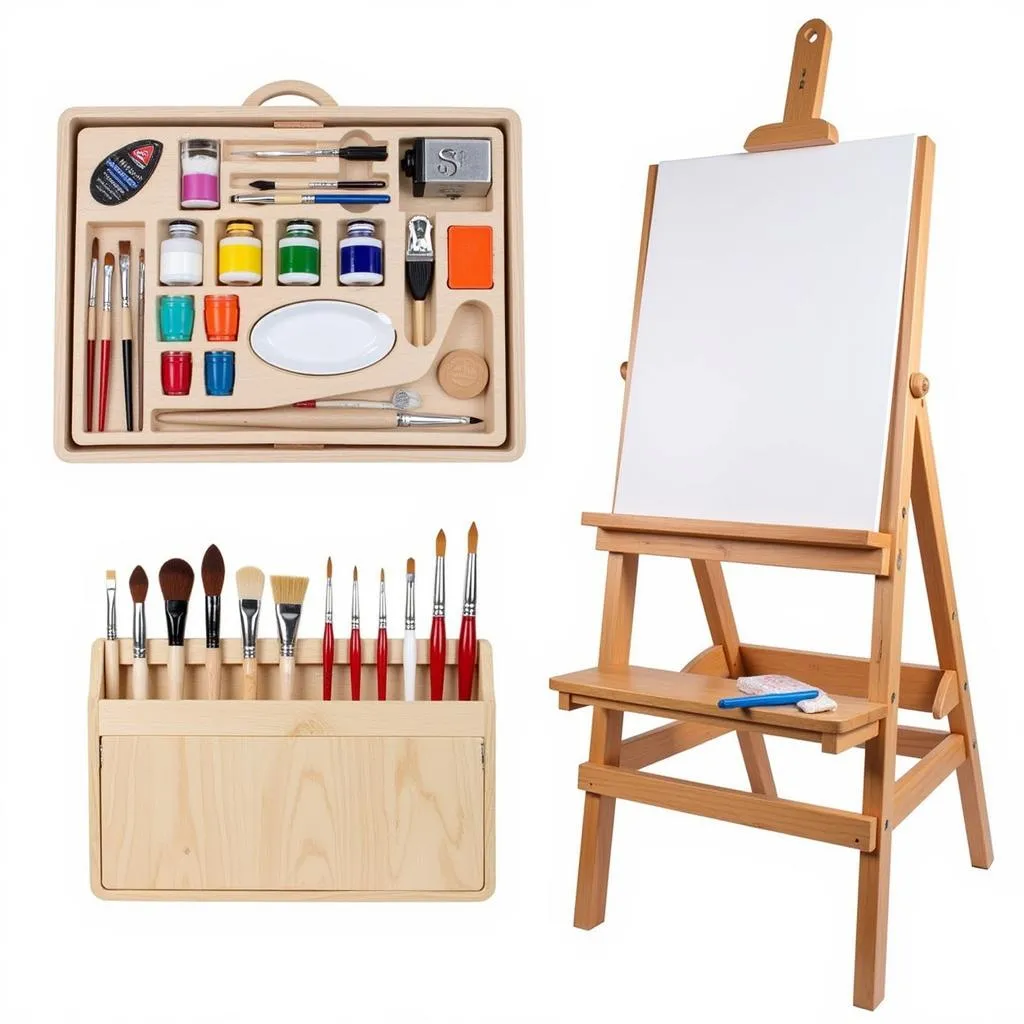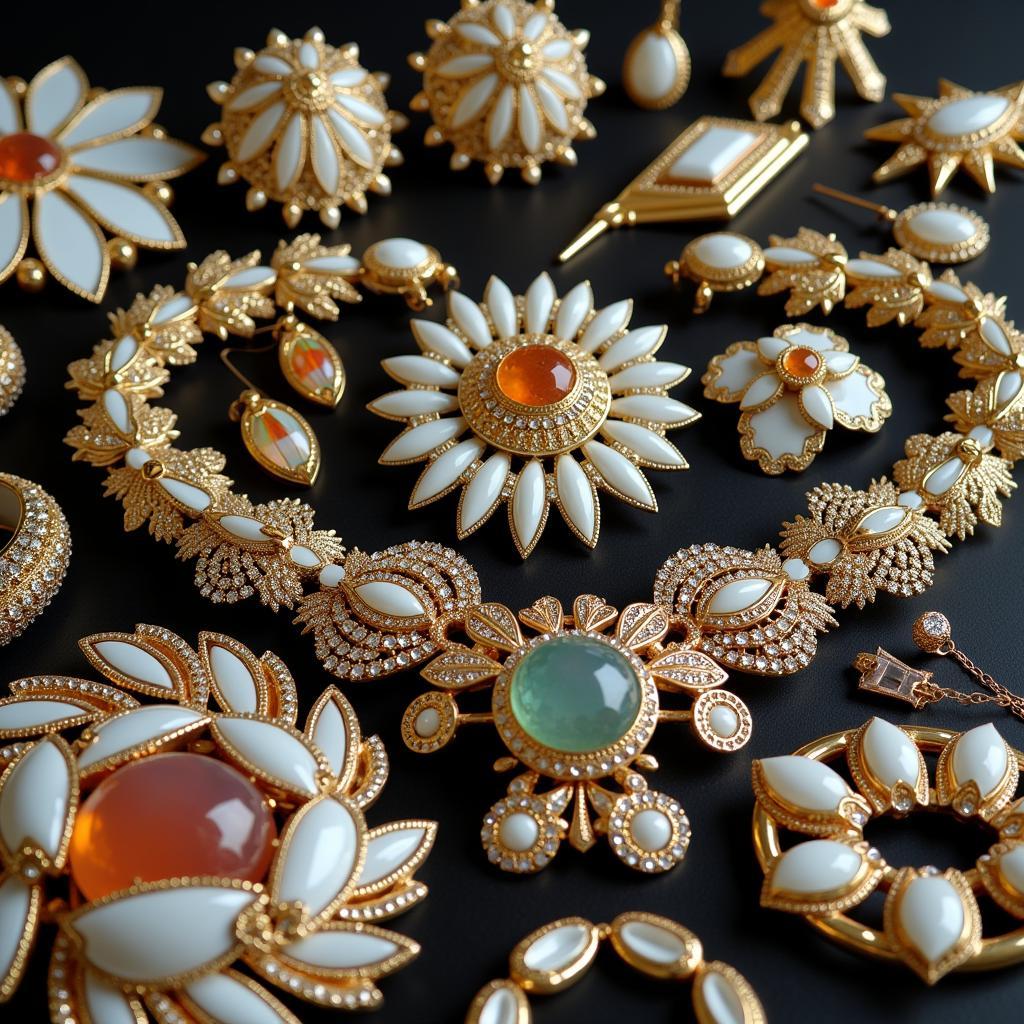Exploring the Depths of Blue Art Painting
Blue Art Painting, a captivating realm of artistic expression, has fascinated artists and art lovers for centuries. From the serene depths of the ocean to the vast expanse of the sky, blue evokes a spectrum of emotions and offers endless possibilities for creative exploration. This article delves into the world of blue in art, exploring its symbolic meanings, diverse techniques, and inspiring examples throughout art history. After reading this article, you will grasp a deeper understanding of using blue in your artwork and be inspired to create your own blue masterpieces. Check out these stunning abstract art paintings blue.
The Symbolism and Psychology of Blue
Blue holds a unique position in the color spectrum, often associated with tranquility, peace, and spirituality. It can represent vastness, depth, and the unknown. In various cultures, blue symbolizes trust, loyalty, and wisdom. However, darker shades of blue can also evoke feelings of sadness, melancholy, and even fear. This duality makes blue a powerful tool for artists to convey complex emotions and narratives within their work. Imagine the vastness of the ocean represented in a calming yet powerful shade of blue, contrasted with a stormy, turbulent scene depicted in dark, brooding blues.
Different Shades and Techniques in Blue Art Painting
From the vibrant ultramarine to the softest cerulean, the range of blue hues available to artists is extensive. Each shade carries its own subtle nuances and emotional weight. Artists can further manipulate blue through various painting techniques, creating a diverse array of textures and effects. Layering techniques can build depth and intensity, while dry brushing can produce a hazy, atmospheric effect. The choice of medium also plays a crucial role, with oil paints offering rich, luminous blues and watercolors allowing for delicate washes and translucent layers.
Blue in Art History: From Renaissance to Contemporary Art
Blue has played a significant role in art history, appearing in masterpieces across different periods and movements. From the serene blues of Giotto’s frescoes to the expressive blues of Picasso’s Blue Period, artists have utilized this color to convey a range of emotions and themes. The use of ultramarine, a precious pigment derived from lapis lazuli, in Renaissance paintings often signified divinity and spirituality. Impressionist painters like Monet captured the fleeting effects of light and water using vibrant blues, while abstract expressionists like Rothko explored the emotional depth of color through large fields of saturated blue. What is your favorite piece of blue artwork and why?
Creating Your Own Blue Masterpiece: Tips and Techniques
Ready to dive into the world of blue art painting? Start by experimenting with different shades of blue and exploring various painting techniques. Consider the mood and message you want to convey. Do you want to create a serene landscape or a dramatic portrait? Try layering different blues to create depth and texture. Experiment with different brushes and mediums to achieve unique effects. Don’t be afraid to push boundaries and explore your own artistic vision. Check out these interesting blues wall art pieces.
What Makes Blue Art so Enthralling?
The enduring appeal of blue art painting lies in its ability to evoke a wide range of emotions and associations. Its versatility allows artists to express both tranquility and turmoil, serenity and sadness. Blue connects us to the natural world, reminding us of the vastness of the sky and the depths of the ocean. It speaks to our spiritual side, evoking feelings of peace and contemplation. It’s no wonder that blue continues to captivate artists and art enthusiasts alike. See this amazing blue green wall art.
Conclusion
Blue art painting offers a world of creative possibilities. From its rich symbolism to its diverse techniques, blue provides artists with a powerful tool for self-expression. By understanding the nuances of this captivating color, you can unlock its full potential and create your own stunning blue masterpieces.
FAQ
- What are some popular blue pigments used in art?
- How can I create different shades of blue using just primary colors?
- What are some famous examples of blue art painting?
- What surfaces are best for blue art painting?
- What techniques can I use to create texture in my blue artwork?
- How can I use blue effectively in abstract art?
- Where can I find inspiration for blue art painting?
Common Blue Art Painting Scenarios:
-
Seascapes and Underwater Scenes: Blue is the natural choice for depicting the ocean, lakes, and underwater environments. Different shades of blue can be used to create depth, movement, and reflections.
-
Night Skies and Celestial Bodies: From twilight to the deep darkness of night, blue can capture the mystery and beauty of the night sky. It can be used to depict stars, planets, and the moon.
-
Portraits and Figure Studies: Blue can be used to create a moody or contemplative atmosphere in portraits. It can also be used to highlight specific features or create dramatic shadows.
-
Abstract and Non-Representational Art: Blue is a popular choice in abstract art, allowing artists to explore the emotional and expressive qualities of color without being bound by realistic representation. A great example is this stunning bird of paradise wall art.
Further Exploration:
Consider exploring other color palettes that complement blue, such as blue and green, blue and orange, or blue and purple. You can also research different art movements that heavily utilized blue, like the Blue Period of Picasso or the Impressionist movement. Also, take a look at art clip board for new ideas.
Contact Us
For any support, please contact us at Phone: 02462573573, Email: [email protected] Or visit us at: Savico Megamall, 7-9 Đ. Nguyễn Văn Linh, Gia Thụy, Long Biên, Hà Nội 10000, Việt Nam. We have a 24/7 customer support team.




